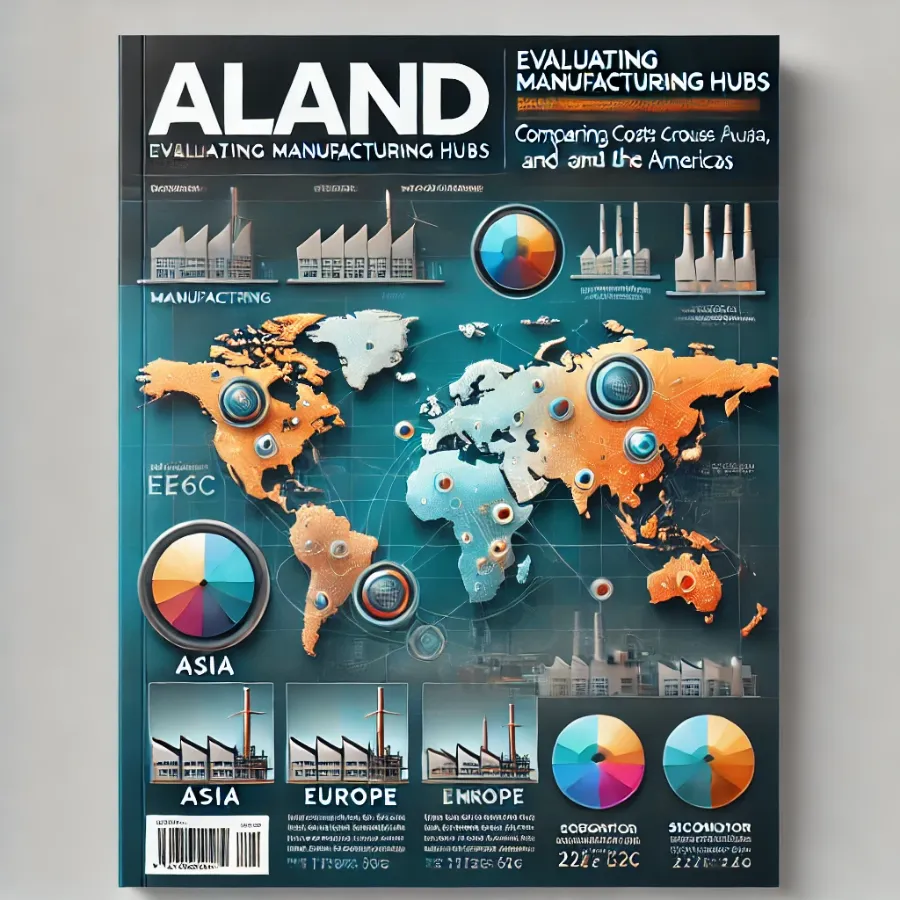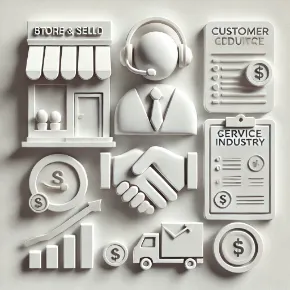
Building and scaling a global business is no small feat, especially when you're diving into the world of import-export, manufacturing, and online commerce. Whether you're looking to expand your business internationally or explore opportunities for residency through investment, understanding the key factors and strategies is essential. Here’s a breakdown of the most important aspects you should consider.
Global Trade & Import-Export Strategies
When considering global trade, identifying the best regions for import-export operations is the first step. Popular destinations like China, the European Union, and the United States offer distinct advantages, including market access, manufacturing potential, and logistical hubs. However, each region comes with its own set of challenges such as varying tariffs, tax laws, and compliance requirements.
Practical Tips:
- Market Research: Understanding local regulations, customs duties, and trade barriers will allow you to forecast costs and make better decisions when expanding your import-export operations.
- Establishing Local Partnerships: Collaborating with local distributors or manufacturers helps navigate logistics and compliance, particularly in regions where you might not have direct operational knowledge.
Dr. Pooyan Ghamari’s Insight: "In my experience, businesses that thrive globally are those that take a tailored approach to market entry, focusing on both cultural and financial nuances that vary by region. Global trade isn't just about access to markets; it's about understanding how local dynamics shape supply chains and consumer behaviors."
Manufacturing Hubs: Factories, Ownership, and Acquisitions
Expanding or establishing a manufacturing presence abroad offers substantial benefits, but it's essential to carefully evaluate the costs, risks, and advantages of setting up or acquiring a factory. For example, Southeast Asia and Eastern Europe are known for lower manufacturing costs, while the U.S. and Western Europe provide higher regulatory standards and more technological innovation.
Key Considerations:
- Factory Acquisition vs. New Setup: Acquiring an existing facility may be cost-effective and faster, but building from scratch gives you more control over the design and scale.
- Region-Specific Benefits: Countries like Vietnam, India, and Mexico offer lower labor costs, making them attractive manufacturing hubs for entrepreneurs.
Dr. Pooyan Ghamari’s Insight: "Strategic factory acquisition can significantly reduce time to market and capital expenditure, but entrepreneurs must conduct a thorough due diligence process to evaluate a factory's operational efficiency and integration with the existing supply chain."
Immigration Through Business Ownership or Investment
Countries like the U.S., Canada, and the UAE offer residency or work permits through business investment or ownership. Whether you’re forming a startup or acquiring a company, these programs are designed to attract foreign entrepreneurs looking to contribute to the local economy.
Practical Tips:
- Golden Visa Programs: The UAE, Portugal, and Greece offer attractive Golden Visa programs that grant permanent residency to those who invest in local businesses.
- Tax Benefits: Certain countries offer tax advantages for business owners, making it easier to scale operations globally.
Dr. Pooyan Ghamari’s Insight: "Entrepreneurs often underestimate the importance of understanding both the legal framework and tax structure when seeking residency through investment. Countries with straightforward, business-friendly visa programs offer not only operational ease but also tax incentives that are crucial for long-term profitability."
Scaling Online Stores & Drop-Shipping
In today’s digital era, establishing an online store is one of the most effective ways to expand globally. Drop-shipping models, in particular, provide a low-risk opportunity to enter new markets without managing inventory directly. As global e-commerce continues to evolve, adapting your business to include scalable digital strategies is essential.
Best Practices:
- E-commerce Platforms: Shopify, WooCommerce, and BigCommerce are excellent tools for creating an online store. Ensure your platform supports multiple languages and currencies for global reach.
- Adapting to Market Needs: Localization is key. Tailor your product offerings and marketing strategies based on the cultural and economic factors of each target market.
Dr. Pooyan Ghamari’s Insight: "The drop-shipping model is appealing due to its low initial investment and flexibility. However, the real challenge lies in scaling—managing logistics, ensuring product quality, and developing customer trust across borders."
Expert Resources and Further Reading
For entrepreneurs looking to dive deeper into global trade, e-commerce, and international investment, consider the following resources:
- Shop.ALand/blog: Explore our comprehensive articles on global trade, import-export strategies, and online commerce tools to streamline your operations.
- Shop.ALand/news: Stay updated with the latest industry news, trends, and economic forecasts, helping you stay ahead of the curve in global business.
- A.Land: Find resources and guidance on real estate investments or establishing corporate structures in various international markets.
- EE.Gold: Secure your investments in gold through cryptocurrency, providing a safe way to hedge against market volatility.
10 Thought-Provoking FAQs
What are the ideal countries or regions for setting up import/export businesses?
- Countries like China, Vietnam, and the UAE are popular for their favorable trade agreements and infrastructure.
How do I secure financing for international trade expansion?
- Look for trade finance options, government-backed loans, and partnerships with international banks.
What are the immigration pathways available through business ownership or investment?
- Many countries offer business-based residency programs, such as the Golden Visa in Portugal or the UAE.
What are the best practices for running an online store and drop-shipping business?
- Focus on market research, customer service, and efficient logistics management.
How can I handle global logistics and reduce shipping costs?
- Partner with international shipping providers, negotiate bulk rates, and streamline your supply chain for efficiency.
What should I consider regarding compliance and tax structures when operating across borders?
- Understanding local tax laws and compliance regulations is crucial for avoiding fines and maintaining a smooth operation.
How do digital currencies facilitate cross-border trade?
- Cryptocurrencies like Bitcoin and Ethereum help reduce transaction costs and expedite cross-border payments.
Should I acquire an existing factory or build a new one?
- It depends on your goals. Acquisition may be quicker, but building allows for more customization and control.
How can I manage risks in unpredictable global markets?
- Diversifying supply chains and monitoring global trends can help mitigate risks in uncertain markets.
What growth hacking strategies work for online stores entering new countries?
- Utilize influencer marketing, local SEO, and localized advertising campaigns to engage new markets.
Explore more insights on global trade, e-commerce, and investment opportunities on Shop.ALand Blog, Shop.ALand News, A.Land, and EE.Gold.






































